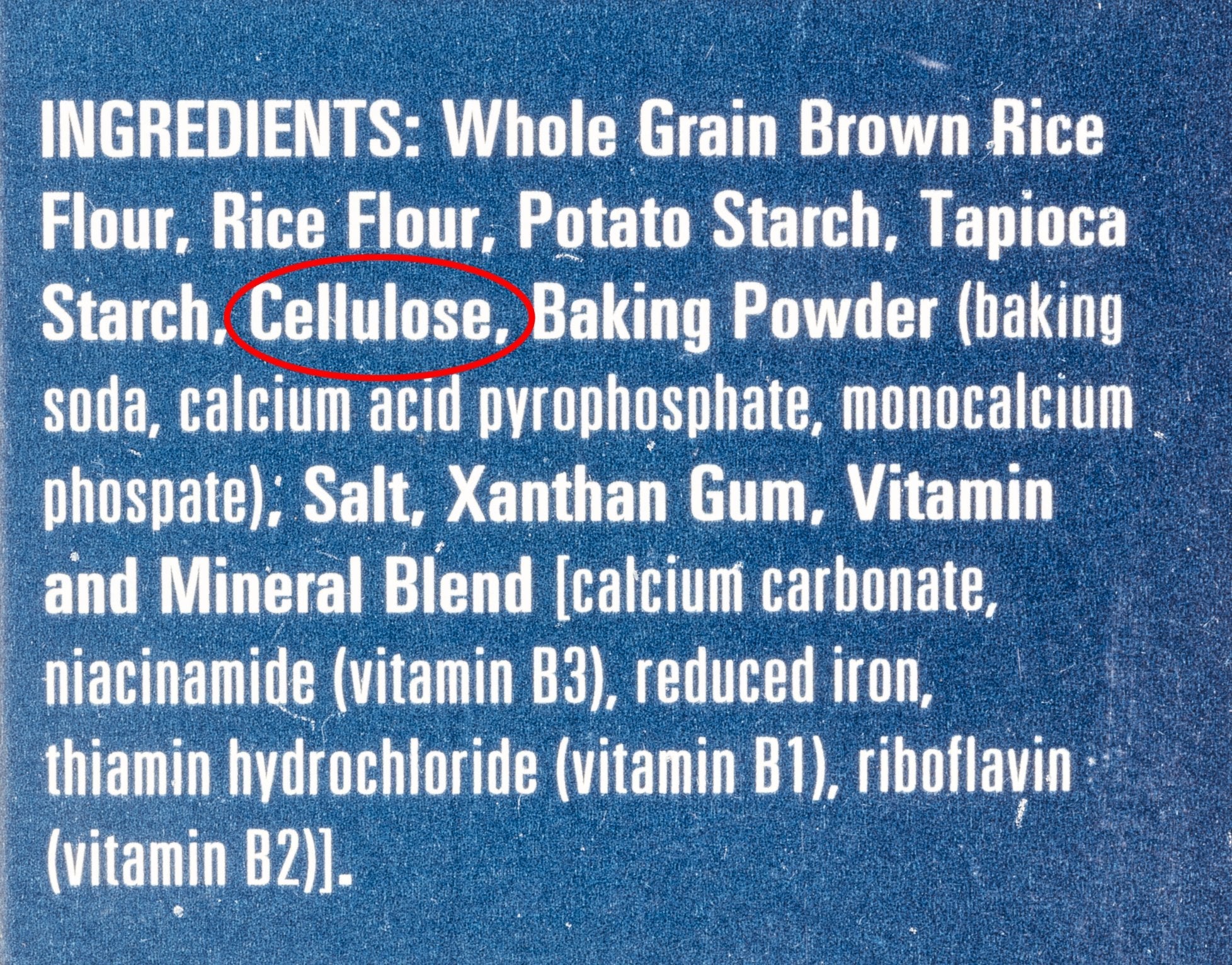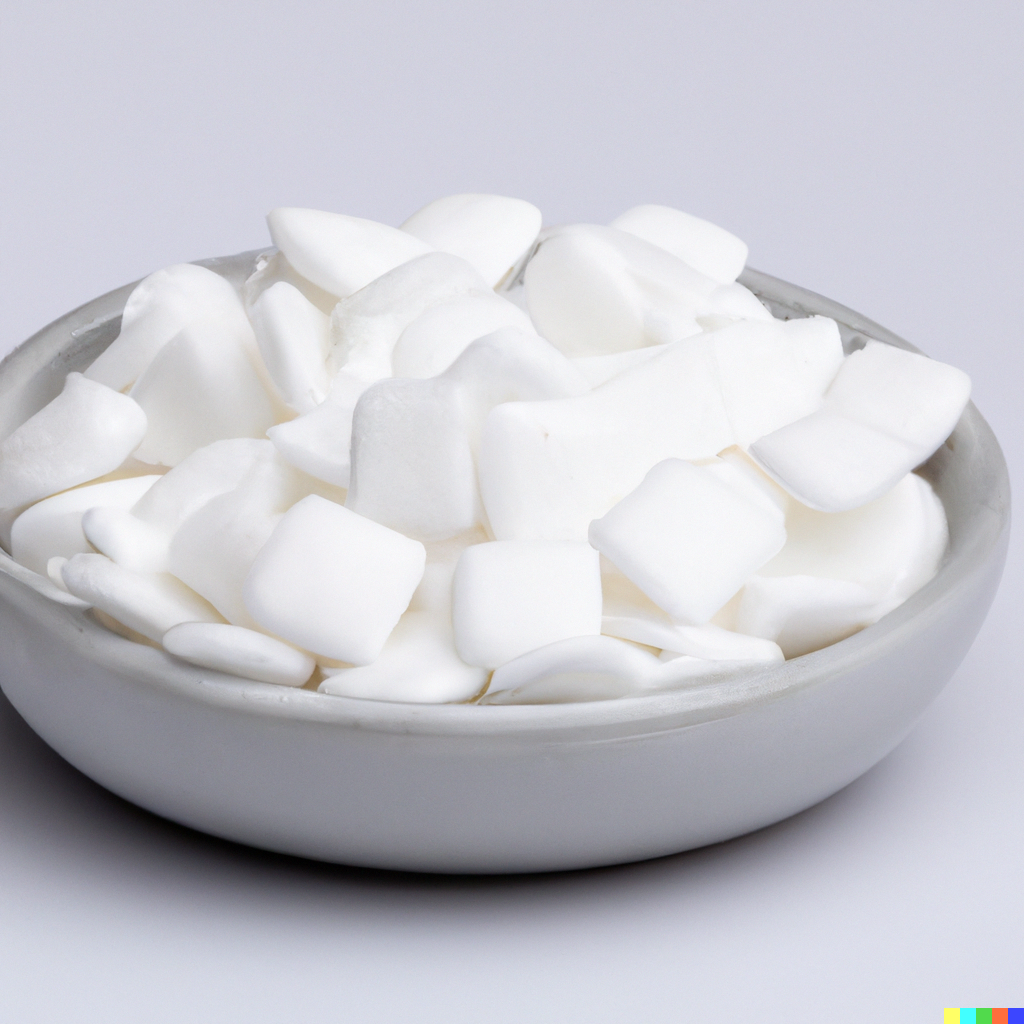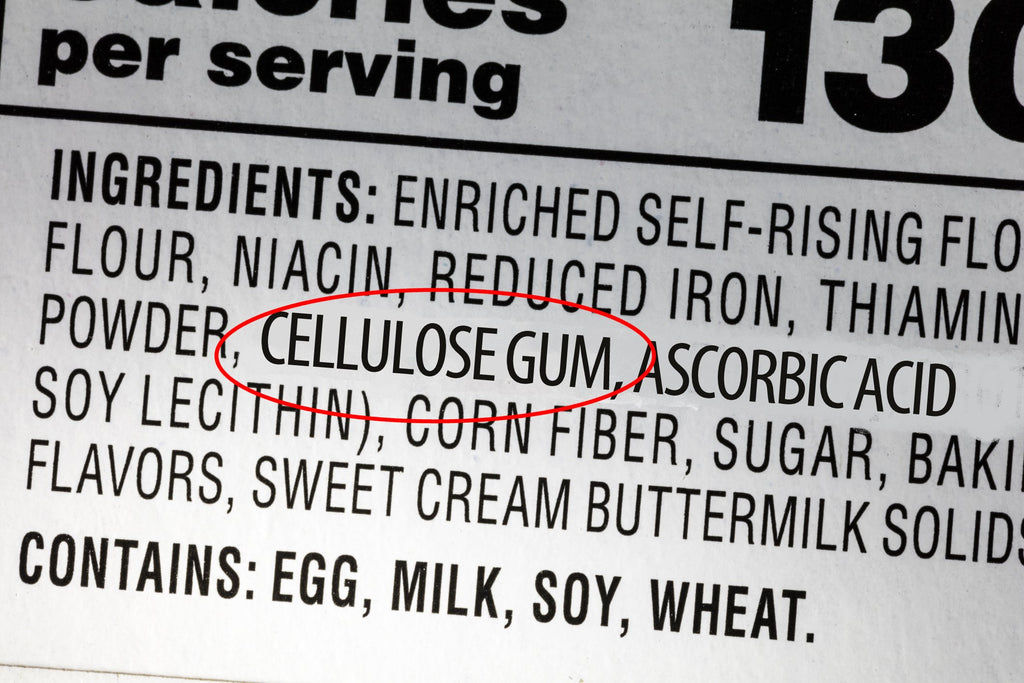Trending searches

Is Cellulose Gum Bad for You? Risks, Benefits, and Uses Explained
SUBSCRIBE TO OUR BLOG
Promotions, new products, and recipes.
Cellulose gum, a common food additive, has been taking center stage in various food products. Some praise it for its ability to enhance texture and maintain freshness, while others express concerns over its potential side effects. But what exactly is cellulose gum? And is it safe for consumption? Is cellulose gel and gum bad for you? is powdered cellulose bad for you? Join us as we uncover the truths about cellulose gum, its benefits, risks, and the question, “Is cellulose gum bad for you?” along with its alternatives.
Key Takeaways
-
Cellulose gum is a natural food additive used to thicken and stabilize products, providing low-calorie options with functional benefits.
-
Potential risks include allergic reactions, altering gut flora, and lack of nutritional value.
-
The FDA and EFSA have approved cellulose gum as safe for use in food products worldwide. There are natural alternatives available that should be considered before making an informed decision.
Understanding Cellulose Gum

A close-up of a bowl of food with cellulose gum as an ingredient.
Cellulose gel vs cellulose gum: Cellulose gum, also known as cellulose gel, is a natural food additive derived from plant cell walls such as cotton or trees. It plays a vital role in ensuring consistency and texture by stabilizing and thickening various food products. From diet foods and beverages to baked goods and desserts, you can find cellulose gum in a wide range of products. However, there’s very little cellulose gum used in food products, as it is typically found at the end of the ingredients list.
When cellulose reacts with a mild acid, it creates a water-soluble compound suitable for use as a food additive. This makes cellulose gum a very functional ingredient, as it helps prevent the separation of oil and water-based ingredients in food products.
So, the next time you enjoy ice cream free from ice crystals or continue drinking fruit juices without worrying about fewer calories, you might have cellulose gum to thank for the delicious final product.
Production Process of Cellulose Gum
Where does cellulose gum come from? Cellulose gel ingredients: The production of cellulose gum involves the following steps:
-
Extracting cellulose from certain plants like cotton or trees, using salt and acetic acid.
-
Reacting cellulose with a mild acid.
-
Filtering the mixture.
-
Drying the filtered mixture to obtain a fine powder.
This fine powder is sodium carboxymethyl cellulose, also known as cellulose gum, is a versatile thickening agent used in various food products.
Although only a small amount of cellulose gum is needed to maintain moisture and provide the desired texture in food products, its presence has become increasingly prevalent in food labels. Consumers who are health-conscious may want to familiarize themselves with this common food additive to better understand its impact on their favorite products.
The Good Side: Benefits and Applications

A person drinking a glass of fruit juice with cellulose gum as an ingredient.
Cellulose gum offers numerous benefits, such as creating low-calorie food options, maintaining freshness in baked goods, and improving the texture of spice mixes and condiments. Cellulose powder made from plants, is a versatile food additive, it can be found in an array of everyday food products, catering to the needs of health-conscious consumers.
Let’s explore some of the specific applications of cellulose gum in various food categories.
Diet Foods and Beverages
Cellulose gum or cellulose gel, is a key player in diet foods and beverages where it helps to reduce calories while preserving the preferred texture and taste. This natural food additive, derived from wood pulp, can be found in fruit juices and helps increase viscosity, allowing for reduced caloric content. For health-conscious consumers, cellulose gum offers a way to enjoy their favorite fruit juices without compromising on taste or texture.
In addition, cellulose gum functions as a dietary fiber, known as microcrystalline cellulose, extending its benefits to health-conscious individuals. Opting for products that include cellulose gum allows consumers to savor a broader variety of low-calorie foods and beverages without giving up their favorite delights.
Baked Goods and Desserts
Cellulose gum is commonly found in highly processed foods, such as baked goods and frozen desserts, where it helps maintain stability, texture, and freshness. It aids in sustaining the texture and moisture of baked goods, prolonging their shelf life and ensuring a delicious final product.
In frozen desserts, cellulose gum:
-
Prevents freezer burn by reducing the formation of ice crystals
-
Results in a smoother and creamier texture
-
Enhances the overall quality of baked goods and desserts
-
Contributes to longer-lasting freshness
Cellulose gum, one of the commonly used food gums, is a valuable addition to these products.
Spice Mixes and Condiments
Spice mixes and condiments, such as instant dressings, soup mixes, and dips, may also contain cellulose gum. This food additive helps improve texture and consistency, ensuring a satisfying experience for consumers.
While there are potential risks associated with the use of cellulose gum in spice mixes and condiments, such as allergic reactions and sensitivities, the potential benefits of enhanced texture and consistency often outweigh these concerns. As a result, cellulose gum continues to be a popular ingredient in the formulation of various spice mixes and condiments.
Try Cellulose Gum for Yourself
Pick up a packet of Cape Crystal Brands Cellulose Gum. You'll be glad you did.
The Concerns: Potential Risks and Side Effects
Despite its numerous benefits, the question is powdered cellulose bad for you? Cellulose gum is not without its potential risks and side effects. Some concerns include altering gut flora, causing allergic reactions, and providing no nutritional value.
Let’s probe further into these issues to understand the potential effects of cellulose gum on our health.
Impact on Gut Health
Cellulose gum may negatively impact gut health by altering the balance of gut flora, potentially leading to inflammatory bowel diseases. As a prebiotic, cellulose gum promotes the growth of beneficial bacteria in the gut, consequently altering the balance of gut flora.

An imbalance in the gut microbiome can result in inflammation and possibly inflammatory bowel disease, raising concerns about the potential impact of cellulose gum on gut health. As a result, individuals with a history of gut health issues should exercise caution when consuming products containing cellulose gum.
Allergic Reactions and Sensitivities
Although allergic reactions to cellulose gum are rare, some individuals may experience symptoms such as hives, itching, and difficulty breathing. In the event of an allergic reaction, it is recommended to seek medical attention immediately and abstain from consuming cellulose gum in the future.
It is important to note that cellulose gum is not a widely known allergen, and the likelihood of experiencing an allergic reaction or sensitivity is relatively low. Nonetheless, being aware of the potential risks can help individuals make informed decisions about their food choices.
Lack of Nutritional Value
Cellulose gum offers no nutritional value and is used solely for its functional properties. It is unable to be absorbed or digested by the body, making it a common control in dietary fiber studies.
While the lack of nutritional value may be a concern for some, the functional benefits of cellulose gum, such as its thickening and stabilizing properties, often outweigh this downside.
Nevertheless, it is crucial for consumers to be aware of the nutritional implications of the food additives they consume and make informed decisions accordingly.
Regulatory Insights: FDA and EFSA Stance on Cellulose Gum

A person holding a spoonful of food with natural ingredients.
Both the FDA and EFSA recognize cellulose gum as a safe food ingredient, permitting its use in various food products worldwide. The FDA has determined that cellulose gum is generally recognized as safe (GRAS) and is recognized as a dietary fiber, approving its use as a food additive in a wide range of products.
The European Food Safety Authority (EFSA) also acknowledges cellulose gum as a safe food ingredient, allowing its use in food products across the globe. With regulatory approval from both the FDA and EFSA, consumers can feel confident about the safety of cellulose gum in their food choices.
Natural Alternatives to Cellulose Gum
For those seeking natural alternatives to cellulose gum, options such as guar gum, xanthan gum, and agar-agar are available and can also provide thickening and stabilizing properties. These alternatives, derived from natural sources, are free from artificial additives and preservatives, offering a healthier option compared to cellulose gum.
However, while natural substitutes for cellulose gum might seem healthier, they might not always be as cost-effective or easy to use. Consumers should weigh the benefits and drawbacks of each option when selecting food products containing these additives.
Commonly Asked Questions

Ingredient label of a food product with the words 'cellulose gum' highlighted, representing the question 'Is cellulose gum bad for you?'
In the following part, we’ll tackle frequently asked questions about cellulose gum, its safety, and its application in diverse food items. We hope that by answering these questions, we can help to dispel any misconceptions or concerns you may have regarding this widely used food additive.
Cellulose gum is a commonly used ingredient in food items. It is regarded as fully safe by authorities. It is a natural,
Summary
In conclusion, cellulose gum is a versatile food additive with numerous benefits, such as enhancing texture, maintaining freshness, and offering low-calorie options for health-conscious consumers. While there are potential risks and side effects, such as its impact on gut health and the possibility of allergic reactions, both the FDA and EFSA have recognized cellulose gum as a safe food ingredient. By understanding the advantages and disadvantages of cellulose gum, consumers can make informed decisions about the food products they choose to consume.
Frequently Asked Questions
Is cellulose gum safe to eat?
Cellulose gum is generally considered to be safe according to the U.S. Food and Drug Administration (FDA), but those with allergies or irritable bowel syndrome may experience adverse reactions. It has no nutritional value and should not be consumed as a food source.
Is cellulose bad for your body?
Cellulose from food sources like fruits, vegetables, and whole grains is generally safe when consumed in moderation. However, getting too much may lead to side effects like gas, bloating, and stomach pain. It's important to listen to your doctor's advice on how much cellulose your body needs.
What does cellulose gum do?
Cellulose gum, or sodium carboxyethylcellulose (CMC), is a common food additive used to thicken and stabilize a variety of foods. It helps modify the behavior of water, adding texture and enhancing mouthfeel, while also improving the flow of food and beverage products.
Is cellulose gum in toothpaste bad for you?
Cellulose gum, used in small quantities in toothpaste, has been deemed safe by the Cosmetic Ingredient Review panel and is also considered a food-grade ingredient. The FDA has further confirmed it doesn't pose any risk to health and can be a useful addition to products.
What are the potential risks associated with cellulose gum?
Cellulose gum has been linked to digestive issues such as bloating, gas, and diarrhea. It can also trigger allergic reactions in some individuals.

|
About the Author Ed is the founder of Cape Crystal Brands, editor of the Beginner’s Guide to Hydrocolloids, and a passionate advocate for making food science accessible to all. Discover premium ingredients, expert resources, and free formulation tools at capecrystalbrands.com/tools. — Ed |
- Choosing a selection results in a full page refresh.





1 comment
Shirley M Wilbert
I was told cellulose gum and gel was from potatoes is that true